
Publisher:
Bonnie King
CONTACT:
Newsroom@Salem-news.com
Advertising:
Adsales@Salem-news.com

~Truth~
~Justice~
~Peace~
TJP
Dec-06-2010 14:41

 TweetFollow @OregonNews
TweetFollow @OregonNews
IFAD Study: 350 Million Rural People Pull Out of Desperate Poverty in Past Decade
Salem-News.comRural Poverty Report shows mixed results across regions, opportunities for progress in changing agricultural markets
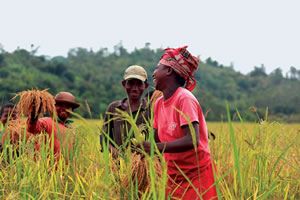 Learn more, visit: Rural Poverty Report 2011 |
(ROME) - Despite improvements over the past 10 years that have lifted more than 350 million rural people out of extreme poverty, global poverty remains a massive and predominantly rural phenomenon – with 70 per cent of the developing world’s 1.4 billion extremely poor people living in rural areas – according to a report released today by the International Fund for Agricultural Development (IFAD).
IFAD’s Rural Poverty Report 2011 says that, during the past decade, the overall rate of extreme poverty in rural areas of developing countries – people living on less than US$1.25 a day – has dropped from 48 per cent to 34 per cent. Dramatic gains in East Asia, particularly China, account for much of the decline.
The report points to an alarming increase in the numbers of extremely poor people in rural areas of Sub-Saharan Africa, although the percentage living on less than the equivalent of US$1.25 a day – at 62 per cent – has actually dropped slightly since IFAD last issued a Rural Poverty Report in 2001. It also notes the persistence of rural poverty on the South Asian subcontinent, which is home to half of the world’s 1 billion extremely poor rural people.
Increasingly volatile food prices, the uncertainties and effects of climate change, and a range of natural resource constraints will complicate further efforts to reduce rural poverty, the report says.
But the report also emphasizes that profound changes in agricultural markets are giving rise to new and promising opportunities for the developing world’s smallholder farmers to significantly boost their productivity, which will be necessary to ensure enough food for an increasingly urbanized global population estimated to reach at least 9 billion by 2050.
Accordingly, “there remains an urgent need…to invest more and better in agriculture and rural areas” based on “a new approach to smallholder agriculture that is both market-oriented and sustainable,” the report says.
“The report makes clear that it is time to look at poor smallholder farmers and rural entrepreneurs in a completely new way – not as charity cases but as people whose innovation, dynamism and hard work will bring prosperity to their communities and greater food security to the world in the decades ahead,” said Kanayo F. Nwanze, IFAD’s President.
“We need to focus on creating an enabling environment for rural women and men to overcome the risks and challenges they face as they work to make their farms and other businesses successful,” he said.
Significant gains in many areas
In addition to the overall decline of extreme poverty in rural areas of developing countries, the Rural Poverty Report 2011 points to other significant gains, most notably:
- A drop in the overall poverty rate of US$2 a day in rural areas, from 79 per cent to 61 per cent over the past decade.
- Remarkable progress in rural areas of East Asia – primarily China – where the number of extreme poor fell by about two-thirds over the past decade, from 365 million to 117 million, as did the rate of extreme poverty, which fell from 44 to 15 per cent.
- Improvements in other regions, with the extreme rural poverty rate falling by more than half in Latin America and by nearly half in the Middle East and North Africa. In both regions, the percentage of rural people who live in extreme poverty dropped significantly, as well.
Challenges remain
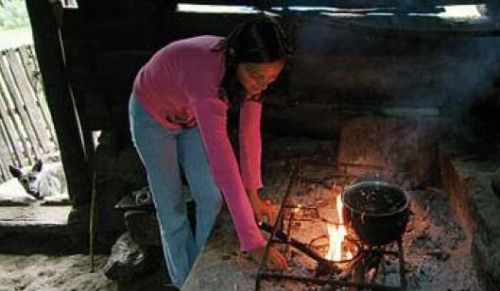
Notwithstanding these gains, the report makes clear that rural poverty continues to be a massive phenomenon throughout much of the developing world, and that it is particularly acute in Sub-Saharan Africa and South Asia:
- Sub-Saharan Africa is home to nearly a third of the world’s extremely poor rural people, whose numbers swelled from 268 million to 306 million over the past decade. While Sub-Saharan Africa’s rate of extreme poverty in rural areas declined from 65 to 62 per cent, it remains by far the highest of any region.
- Rural poverty rates have dropped only slightly in the last decade in South Asia, which now has the largest number of poor rural people – about 500 million – of any region or sub-region. Four-fifths of all extremely poor people in South Asia live in rural areas.
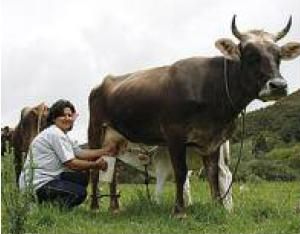
The report cites the consequences of climate change – which will make agricultural production more difficult in many places – as complicating the challenges of addressing rural poverty in these regions and globally.
It also points to the key role of women farmers, who produce most of the food that is consumed locally in rural areas, and the need to address their inadequate access to land tenure, credit, equipment and market opportunities.
In addition, the report says “low levels of investment in agriculture, weak rural infrastructure, inadequate production and financial services, and a deteriorating natural resource base” – particularly land and water and growing competition for their use – are creating an environment which makes it too risky and unprofitable for most of the developing world’s smallholder farmers to participate in agricultural markets.
Opportunities for accelerating progress
Yet the report also indicates that momentous ongoing changes in agricultural markets, as well as emerging opportunities in the rural non-farm economy, offer new hope that major progress can be made in combating rural poverty. These include the rapid growth of urban centres and the accompanying rise in demand for higher value food, as well as the fact that agricultural markets are growing and becoming better organized in order to meet that demand.
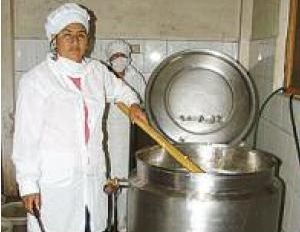
“The world that rural people live in is changing very fast, and that is bringing a range of new opportunities,” said IFAD’s Ed Heinemann, who led the team that wrote the report. “In order to enable them to address the problems they face and make the most of the opportunities, governments and the donors who work with them have got to do much more to support rural areas, to invest in rural areas, to improve their infrastructure and governance, and to make rural areas better places to live and to do business.”
Essential to any rural poverty reduction strategy, said Heinemann, is understanding how to help poor rural people avoid and manage the risks they face – from longstanding risks related to ill-health and natural disasters to new and emerging challenges related to natural resource degradation, the effects of climate change, growing insecurity of access to land, and greater volatility of food prices.
“The food price shocks a few years ago were a wake up call that, with global population growth and the movement of more people into cities, higher and more uncertain food prices could become a fact of life,” said Nwanze. “But this also means that smallholder agriculture – if it is productive, commercially oriented and well linked to modern markets – can offer the developing world’s rural people a route out of poverty as they become part of the solution to global food security challenges.”
The Rural Poverty Report 2011 was made possible with funding from the Governments of Italy, the Netherlands, Sweden and Switzerland, and the Arab Center for the Studies of Arid Zones and Dry Lands.
Articles for December 5, 2010 | Articles for December 6, 2010 | Articles for December 7, 2010


Salem-News.com:
Quick Links
DINING
Willamette UniversityGoudy Commons Cafe
Dine on the Queen
Willamette Queen Sternwheeler
MUST SEE SALEM
Oregon Capitol ToursCapitol History Gateway
Willamette River Ride
Willamette Queen Sternwheeler
Historic Home Tours:
Deepwood Museum
The Bush House
Gaiety Hollow Garden
AUCTIONS - APPRAISALS
Auction Masters & AppraisalsCONSTRUCTION SERVICES
Roofing and ContractingSheridan, Ore.
ONLINE SHOPPING
Special Occasion DressesAdvertise with Salem-News
Contact:AdSales@Salem-News.com


Terms of Service | Privacy Policy
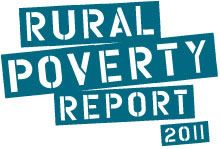
All comments and messages are approved by people and self promotional links or unacceptable comments are denied.
[Return to Top]
©2025 Salem-News.com. All opinions expressed in this article are those of the author and do not necessarily reflect those of Salem-News.com.